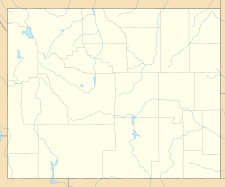Gooseneck Glacier facts for kids
Quick facts for kids Gooseneck Glacier |
|
|---|---|
| Type | Mountain glacier |
| Coordinates | 43°10′55″N 109°38′54″W / 43.18194°N 109.64833°W |
| Length | .45 mi (0.72 km) |
| Terminus | Talus/moraines |
| Status | retreating |
Gooseneck Glacier is a large mass of ice located in the Fitzpatrick Wilderness, which is part of the Shoshone National Forest in the US state of Wyoming. This amazing glacier sits high up in the northern Wind River Range mountains. It's found on the southeast side of Gannett Peak, which is the tallest mountain in Wyoming.
Gooseneck Glacier is very close to another glacier called Dinwoody Glacier. Only a rocky area separates them. Together, these glaciers are part of the biggest group of glaciers in the American Rocky Mountains.
Contents
What is a Glacier?
A glacier is like a giant, slow-moving river of ice. It forms over many years when snow falls and doesn't melt completely. Instead, it piles up, gets compressed, and turns into ice. Glaciers move very slowly, carving out valleys and shaping the land as they go. They are important because they store a lot of fresh water.
Where is Gooseneck Glacier Located?
Gooseneck Glacier is in a special spot in Wyoming. It's on the east side of the Continental Divide of the Americas. The Continental Divide is like a big line that runs through the Americas. On one side, rivers flow towards the Atlantic Ocean, and on the other, they flow towards the Pacific Ocean.
This glacier is found in the Fremont County area. It's surrounded by the wild and beautiful Shoshone National Forest, which is one of the oldest national forests in the United States.
Why is Gooseneck Glacier Important?
Gooseneck Glacier is important for a few reasons. First, it's part of the largest collection of glaciers in the American Rocky Mountains. This makes the area a key place for studying how glaciers are changing.
Second, glaciers like Gooseneck are natural water reservoirs. They store water as ice and slowly release it as they melt, feeding rivers and streams. This water is vital for plants, animals, and even people living downstream.
How are Glaciers Changing?
The status of Gooseneck Glacier is listed as "retreating." This means the glacier is getting smaller over time. It's melting faster than new snow can build it up. Many glaciers around the world are also retreating. Scientists study these changes to understand more about Earth's climate and how it's affecting our planet.


